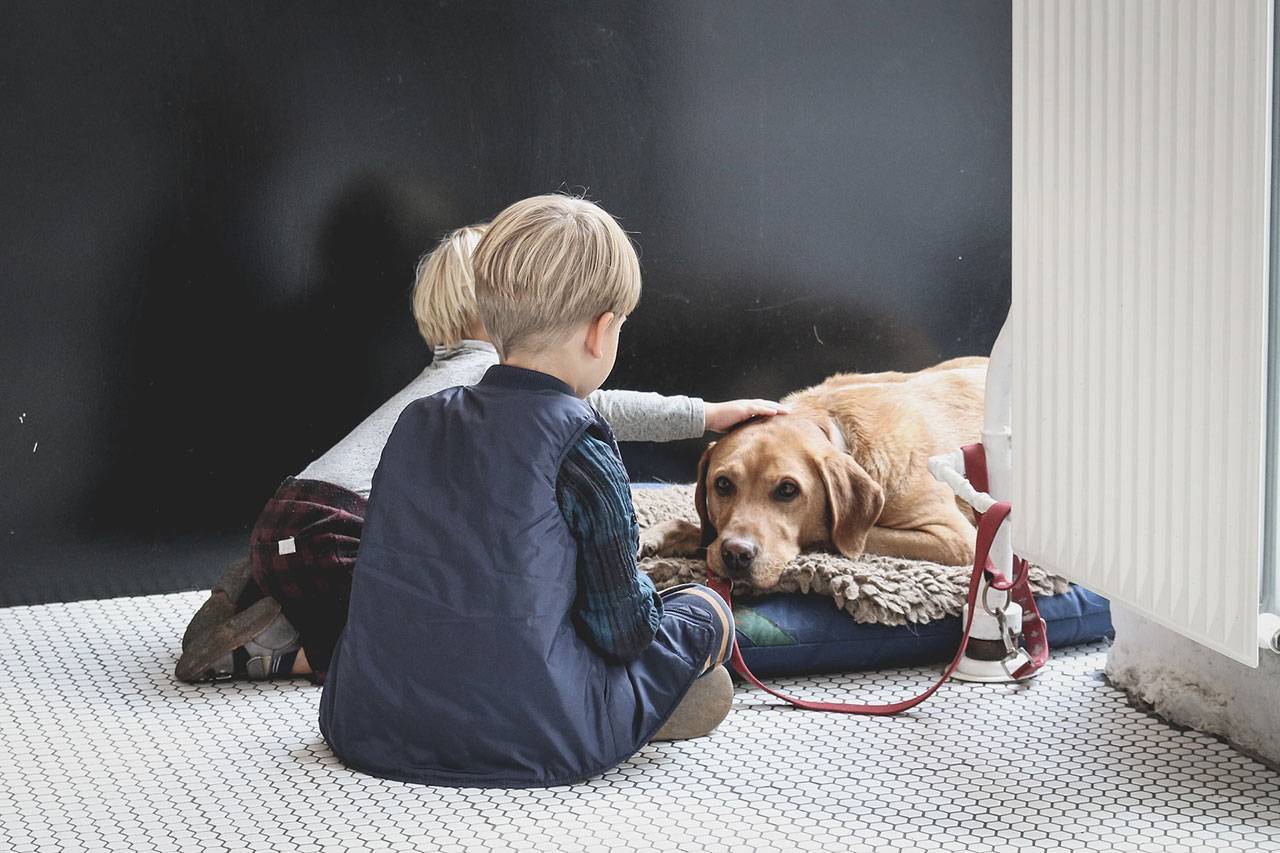How to Teach Kids to be Kind to Animals

Teaching kids about animal kindness can instill empathy and respect for others through the act of caring for another living being. Although the connection may not always be obvious, raising pet-friendly kids leads to responsible, compassionate adults. You may ask yourself: “But how can I teach my kids to be kind to animals?”
This quick guide will offer tips for teaching your kids to treat animals with kindness and compassion.
Lead by Example
The best way to teach your child is to lead by example. Children watch their parents’ behavior and start to model what they see. This behavior modeling helps instill life-long good habits and a positive attitude. Fortunately, there are many ways to show kindness to animals, such as fostering, adopting from a shelter, or caring for an injured animal.
It’s always possible to get a family pet from a breeder, but adopting from a shelter will help you find the perfect pet for your family and teach your children empathy. Additionally, having a family pet offers the chance to instill a sense of responsibility in your child through feeding and cleaning up after their newest friend.
Start Early
Good habits start early. The simplest way to begin teaching your child to be kind to animals is by showing affection to the family pet. Doing this can be as simple as demonstrating how to gently handle a rabbit or throw a ball for a dog to fetch. Naturally, these early activities should be things that even a small child can do, and an adult should supervise to ensure the safety of everyone involved.
Animal Safety
Any animal can pose a danger to children. While teaching your child how to be kind to animals from an early age, it’s essential to supervise your young child and explain how to be safe around animals. There are a few important things to include regarding animal safety, such as:
- Respect their personal space. Many animals require personal space. No matter how gentle and tolerant, every animal will have boundaries. It’s important to teach your child to respect the animal’s needs.
- Animal body language. They may not be able to communicate what they feel the same way humans can, but animals can show it with their body language. For example, if a dog lays its ears back, it’s a sign that it’s not happy and may bite.
- Pulling ears and tails. Some animals like to have their ears and tail stroked but pulling on them isn’t a good idea. Doing this can cause the animal physical pain and may result in the child getting bitten.
- Gentle petting. Some animals may enjoy vigorous petting, but it isn’t appropriate for smaller animals and can even hurt them.
- Sudden movement. Small animals, like rabbits and guinea pigs, are easily startled by sudden movement. Fortunately, teaching your child to move slowly around animals is easy when you show them how.
- Being quiet. You don’t have to teach your child to whisper around the family pet, but you should let them know that loud noises can hurt an animal’s ears – especially since animals have hearing that’s many times more sensitive than a human’s.
Helping your pet-friendly kids learn to be safe around animals takes time, but reinforcing it often will help. Don’t forget that adult supervision is a must for young children just learning about animal kindness.
Incorporate Animals into Fun Activities
The best way to teach about animal kindness is to make the lesson fun. Fortunately, there are plenty of activities that you can do with your children to encourage them to learn how to treat animals with respect and compassion. Aside from playing with and caring for your family pet, you and your children can do these activities:
- Feeding the ducks at a local pond. If you’re lucky enough to have a pond nearby, chances are pretty good there will be ducks there. Bread is a popular option for feeding ducks, but bread lacks the proper nutrients and takes up valuable tummy space, depriving the ducks of good nutrition. Grains – like barley, oats, or even sugar-free cereals – are much better for them and can be bought at any grocery store.
- Go to a petting zoo. Who doesn’t like walking among and feeding the animals at a petting zoo? This way, you can teach your kid about interacting with larger animals in a relatively safe environment.
- Read animal stories. Reading stories about animals, especially if they have to do with looking after or rescuing an animal, makes the lesson not only engaging but easily digestible for a young child.
- Role-playing games. Kids love to pretend, and who hasn’t wondered what it might be like to be an animal? You can pretend to be the family pet while having your child take care of you. This kind of role-playing makes teaching animal kindness easy for you and fun for your child.
- Make a pinecone bird feeder. Making a bird feeder out of an open pinecone is an easy craft that is great for teaching about what wild birds eat and how to help them. All you need to do is tie a loop of string around the pinecone to hang it, then stuff it with nut butter, vegetable shortening, or softened lard. Once you have stuffed the pinecone, roll it in birdseed and hang it outside for the birds to eat. These little feeders are critical in winter when food is hard to find.
- Learn about animals online. A supervised visit to the internet is a great way to learn about animals. By simply entering a type of animal into the search bar, you and your child can learn about everything from apes to zebras.
- Go out on an adventure. Taking your child on an adventure to a nearby natural space, like a forest, a shoreline, or even a grassy park, opens up many teaching opportunities. You can include how litter harms wildlife, little bits of information about the kinds of animals you encounter, and even how to behave around wild animals of all sizes.
Praise your kids when they do it right
Everyone likes to know when they have done something right. For children, that positive reinforcement does more than just make them feel good at the moment – it helps to build their self-confidence and instill a positive attitude that can last a lifetime. Moreover, telling your child when they’ve done something right lets them associate a positive feeling with a particular job. For example, if you encourage them when they give the family pet a treat the right way, they will want to do it more. Doing this will, in turn, help foster more good feelings and establish a bond between the child and the animal.
Conclusion
Teaching your children about animal kindness sets them up to be respectful, responsible, and compassionate adults. It also gives them a safe way to de-stress when life gets hard because being with animals can be so soothing. By showing your children how to interact respectfully with animals, you offer them the chance to turn the family pet into a treasured best friend.

